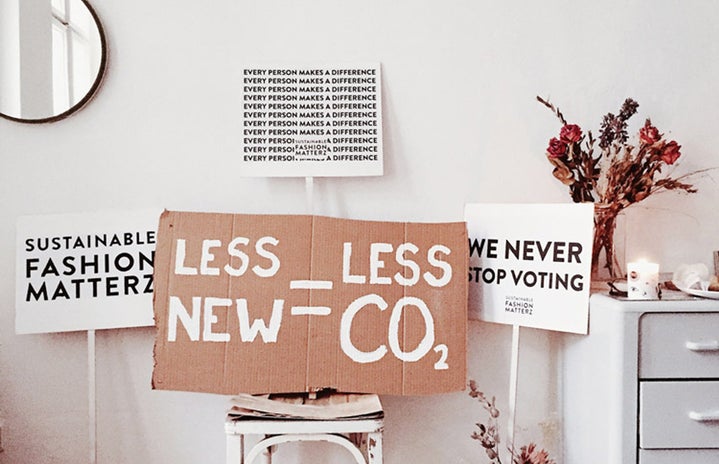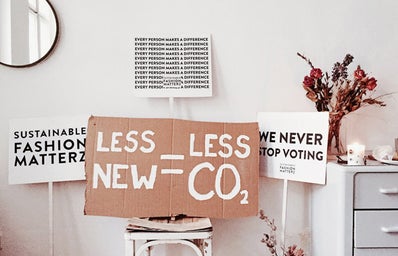Because of fluctuating fashion trends and the convenience of online shopping, fast fashion has become more attractive to teens and young adults.
Fast fashion refers to the quick seasonal cycle of clothing. Instead of having Fall/Winter and Spring/Summer collections, like luxury brands such as Gucci or Balmain, fast fashion companies, like Shein or Forever 21, have 52 micro-seasons. These micro-seasons pass very quickly, resulting in excessive amounts of inventory.
This inventory is often disposed of in landfills, making fast fashion the second largest polluting industry in the world. If we want to decrease the negative impact the fashion industry has on the environment, we must make ethical and conscious choices when buying clothes. Here are a few tips on how to do so:
- Buy from thrift stores and consignment shops.
-
Thrift stores and local consignment shops are great places to find new clothes. Clothes found in thrift stores are often donated by the community. This takes the clothes out of the micro-season cycle, thus decreasing your carbon footprint. Also, thrift stores offer the same cheap prices offered by fast fashion companies. Most stores even have discount days, where items with certain colored tags can be discounted.
- Consume less.
-
Before buying a new outfit for an event, ask yourself “Do I really need that?”. Social media has made it so easy for us to want to keep up with new trends. However, the clothes that we already own can be paired differently. Pinterest is a great place to get outfit ideas. In addition to inventory checking our own closets, try buying clothes only during the summer and winter months. This will decrease the demand for constant micro-seasons.
- Research sustainable brands.
-
As a result of the awareness regarding the negative effects of fast fashion, brands that use sustainable practices have sprung into the limelight. These brands include Everlane, Levi’s, Patagonia, H&M conscious, and much more. Although these brands can be expensive, the quality of the clothes is worth the investment. The greater the quality, the longer the clothes will last, and the less money you’ll spend on clothes in the future.



